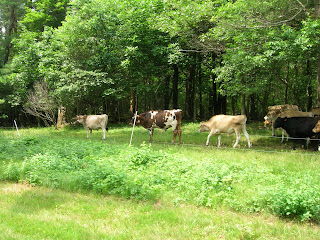What is so special about birdwatching? Why do I enjoy it? What do I get out of it?
1 Birdwatching is done outdoors, usually in relatively natural habitats and areas of open space. I am a big believer in the benefits of spending time outdoors, especially amidst the splendors of what we usually call 'nature'. I believe it is a powerful restorative for our minds and bodies.
2 Birdwatching is a stimulating mental activity, exercising one’s memory and observational skills to a high degree, as well as reasoning ability. It also engages one’s sight and hearing to a great extent. Few things are as important as keeping your mind sharp. (For the record, I think that musical activity is the ultimate all-around exercise for your brain, as it engages your memory, your motor skills, your intellect, language skills, creativity, self-expression, and social skills.)
3 Birdwatching has great depth as an observational and educational pastime, allowing one to delve into the science and lore of birds as far as one could possibly hope to go. This is true of almost any discipline, of course, but rarely is the science so accessible and useful to such a widely-practiced hobby. Knowledge of bird behavior, ecology, etc. immeasurably helps when looking for birds, when identifying birds, and trying to understand birds. (Fishing and hunting qualify here, I would think, as well.)
4 There is tremendous beauty and variety in the appearance, behavior and sounds of birds. An opinion, to be sure, but one shared by lots and lots of people. Certainly birds find their way into poems an awful lot.
5 Birds of many sorts can be found just about everywhere, at almost any time, making it a hobby anybody can do, anywhere, anytime. You can birdwatch on your way to work, as you wake up in the morning...as I said: anywhere, anytime. I know people who keep track of the birds that they identify on television shows (you wouldn't believe how often they use the hooting of a great-horned owl in the background; well, maybe you would believe it. Wood thrush, too.)
6 The variety of birds is such that novices can easily learn to distinguish many common, distinctive species, and dedicated amateurs and scientists can find plenty of challenges in most environments. Entry into the world of birdwatching is easy - most people have done it whether they realize it or not. When I started birdwatching seriously I made a list of the birds I had already seen - crow, blue jay, bald eagle, robin, etc. But even on a short jaunt around the corner I can be challenged with a group of various species of sparrows that have me examining the finer points of their behavior and habitat, the thickness of the streaking on their belly, and the pattern of their various songs in order to figure out what I am actually watching. And of course there's the whole wide world to explore and learn about...
7 Birdwatching is an activity where amateurs can and do contribute meaningfully to the process of scientific discovery. Now this is unusual in most other scientific disciplines, but events such as the christmas bird count that occurs every year across the country give us valuable sets of data by which scientists and amateurs have been able to track patterns in bird dispersion, population and variety against any number of other variables, which can be used in very concrete ways in planning conservation.
8 Birdwatching allows one to learn about their own powers of perception and recognition, giving great insight into the working of his or her brain. This point is a little more mysterious, as it should be, but I am often interested and sometimes amazed at the way experience and knowledge in the field accumulates until identification and instinct work so quickly, naturally and effortlessly together, allowing even a relative dilettante like me to make many identifications from a long distance away, from just a split-second look at a bird in shadow. Of course, this only comes with birds that I am very familiar with. But what is particularly interesting is that the more you become this way with common birds, the more you can see something out of the corner of your eye for just a second and think 'wait a minute, something's off there, that's not a song sparrow, that's something else,' and end up chasing a very unusual sighting.
9 Regular birdwatching deeply connects one with the rhythms of life and the planet, allowing the many swells of the planet to affect us personally – tides, seasons, weather, daylight. This has its apotheosis in the spectacular phenomenon of bird migration, one of the great wonders of life on planet earth and the most exhilarating yearly reminder that the planet is still working. This, for me, is the true heart of birding, and really, of just about any engaged study of nature in the field.







